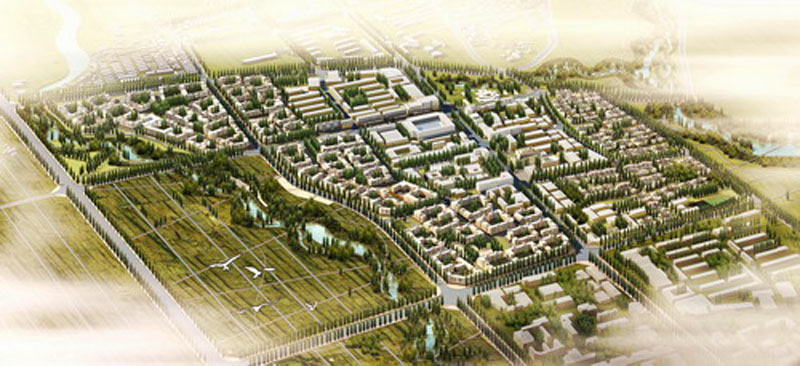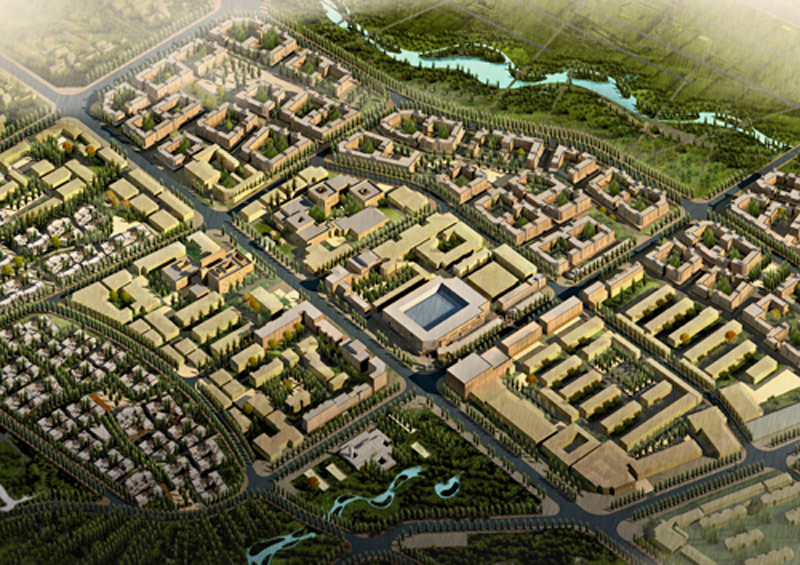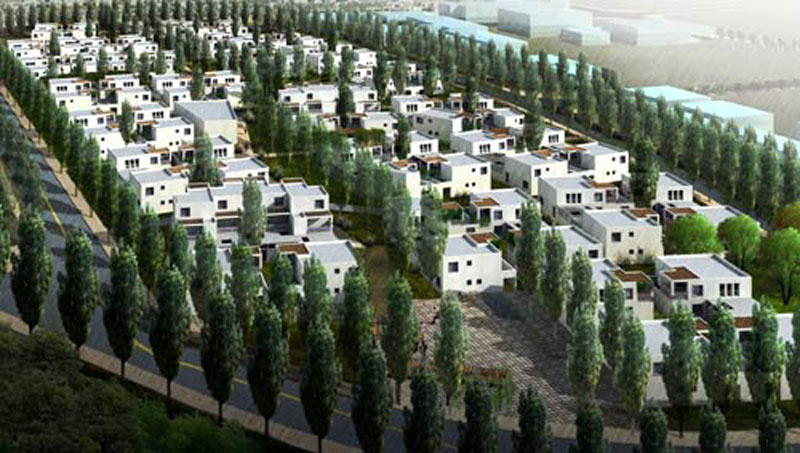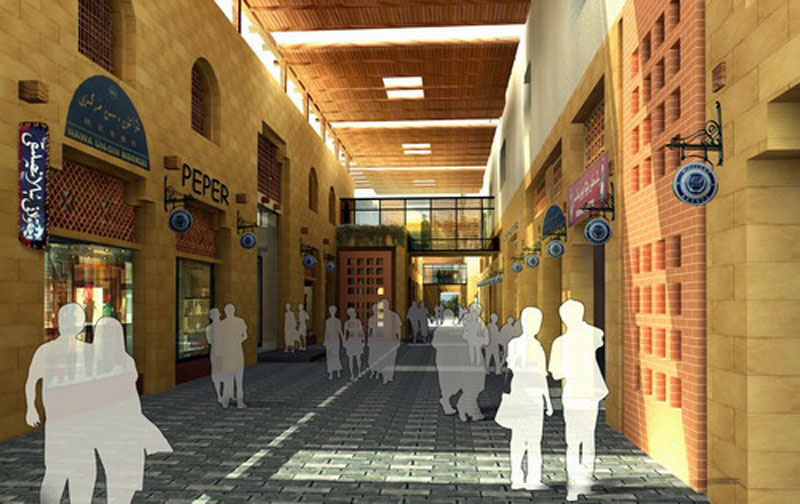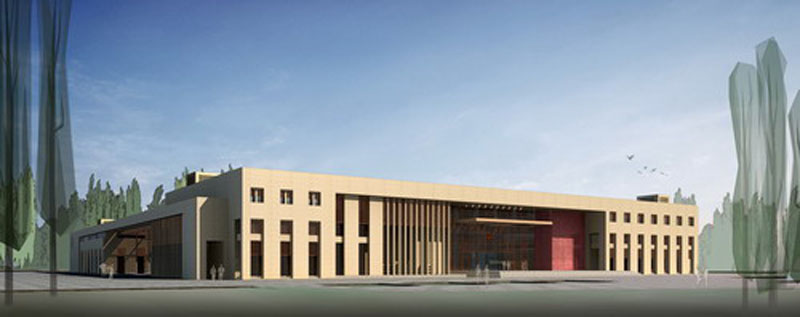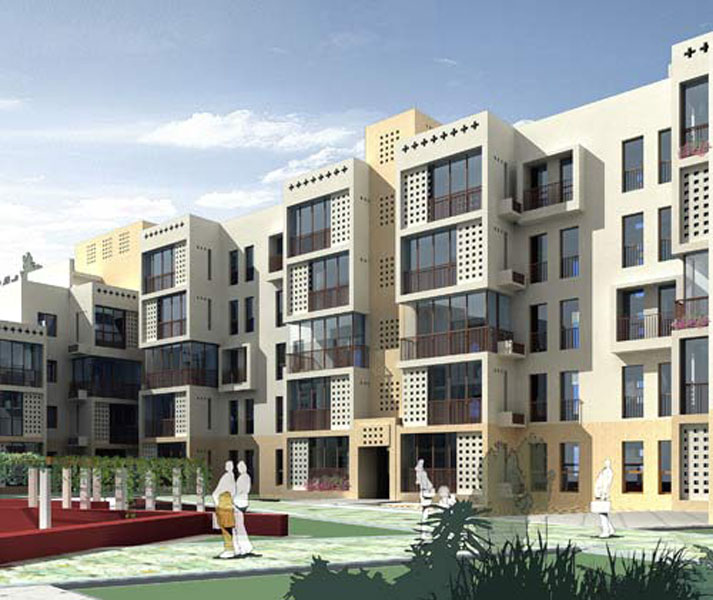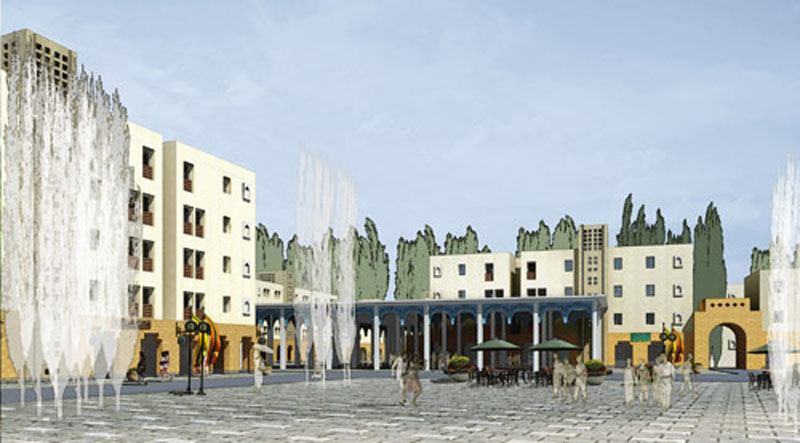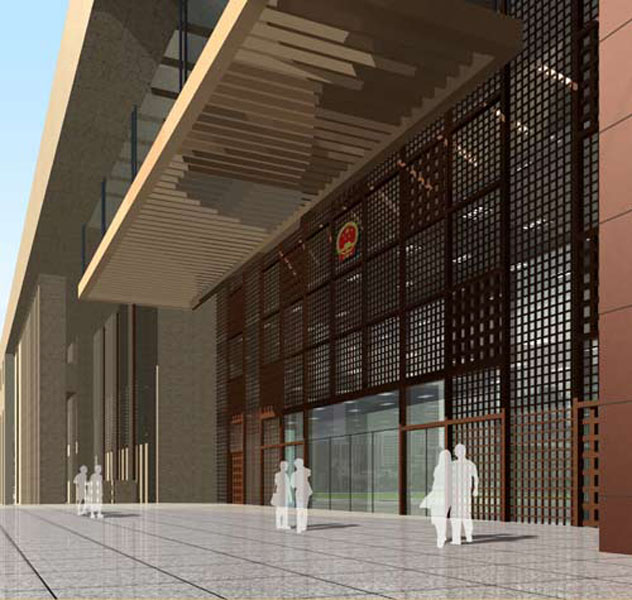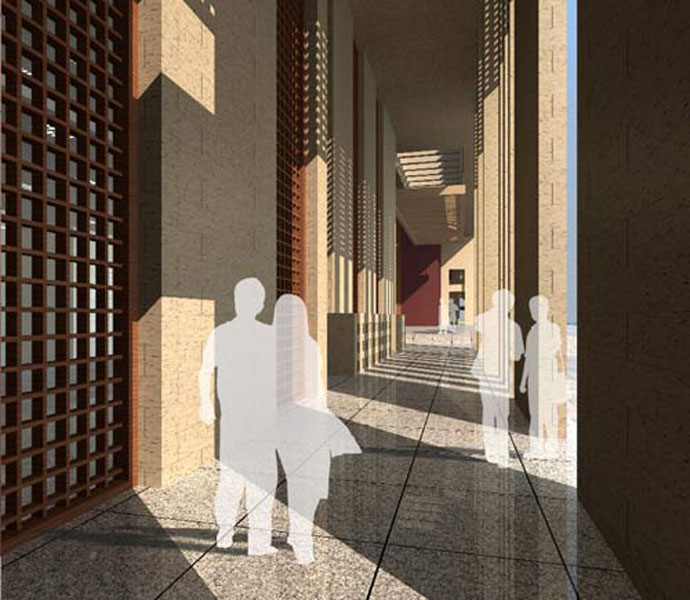Xinjiang Shanshan City Planning
Project Information
- Project Location:
- China Tulufan, Xinjiang
- Project Scale:
- 39,800 Square Kilometers
- Design Time:
- 2006
- Client:
- Shanshan County Construction Bureau, Xinjiang
Project Profile
1. Project Statement
Shanshan County (41°12′–43°33′N, 89°30′–91°54′E) is located on the southern edge of the eastern Tianshan Mountains within the Turpan Basin, covering a total area of 39,800 square kilometers. The design scope includes the area south of Guangming Road, west of Dongheba (including the east bank of Dongheba), east of Xiheba (including the west bank of Xiheba), and north of Dongbaza Road, with a total planned design area of approximately 3 square kilometers.
To strengthen the construction of ecological infrastructure, the plan adopts a dispersed yet concentrated urban layout, enhancing the core area’s aggregation effect within each cluster. It aims to increase living facilities, open spaces, and urban vitality. Based on site analysis and planning principles, the structure forms a "one core, two sections, three corridors + vineyard planting area."
- One Core: The central area where Tuanjie Road and Xincheng Road intersect, currently the commercial center.
- Two Sections: The Xibaha residential community, focusing on updating existing villages, and the Dongheba residential community, focusing on renovating existing villages.
- Three Corridors: Natural ecological corridors formed by the eastern, central, and western river embankments, crucial for water conservation, improving the urban ecological environment, and providing recreational spaces.
Based on the "one core, two sections, three corridors + vineyard planting area" structure, the plan creates various functional zones: comprehensive business service area, traditional living renovation community, traditional cultural renewal community, urban living and leisure area, tourism and leisure resort area, riverbank ecological protection area, and ecological buffer zone. These zones are relatively independent yet integrated, forming a vibrant multifunctional entity. Utilizing innovative urban design concepts and the site’s characteristics, the plan aims to build a livable oasis city in the arid northwest region.
2. Design Strategy
The plan features the following five major characteristics:
- City and Sky – Urban Locality: Compact urban development creating a model for arid regions.
- City and Land – Urban Form: Courtyard-style landscapes that extend Shanshan’s cultural and spatial patterns.
- City and People – Special Spaces: Shaded pathways connecting various parts of the city, providing a comfortable urban living environment.
- City and Culture – Cultural Characteristics: Promoting the Muqam culture and showcasing the distinctive customs of the Western Regions.
- City and Water – Urban Elements: Greenery along riverbanks integrating with the desert and oasis landscapes.
